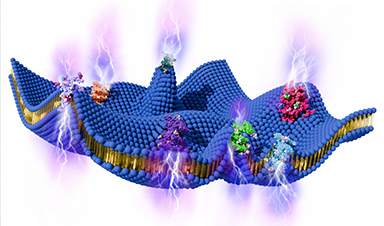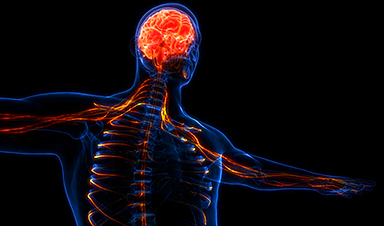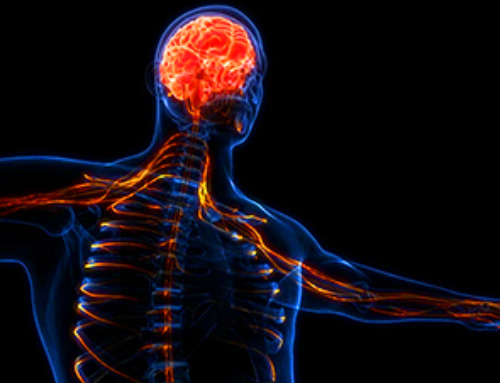New research indicates that cannabis may alleviate “chemo brain.”
New research from the University of Colorado Boulder reveals that cancer patients employing cannabis to manage their symptoms not only experience reduced pain and enhanced sleep quality, but also enjoy another unexpected advantage: after several weeks of continuous use, they seem to think more clearly.
“When you’re in a lot of pain, it’s hard to think,” said senior author Angela Bryan, a professor of psychology and neuroscience at CU Boulder and a cancer survivor. “We found that when patients’ pain levels came down after using cannabis for a while, their cognition got better.”
The small but groundbreaking study, recently published in the journal Exploration in Medicine, is among the first to assess how cannabis bought over the counter at dispensaries— rather than government-supplied or synthetic cannabis — impacts cancer symptoms or chemotherapy side- effects.
Bringing the lab to the patients
Surveys suggest that as many as 40% of U.S. cancer patients use cannabis, yet only a third of doctors feel comfortable advising them about it.
Studying it is complicated because federal law prohibits university researchers from possessing or distributing cannabis for research unless it’s government-issued or of pharmaceutical grade. As a result, most studies have looked only at prescription products like nabilone or dronabinol (typically prescribed for nausea) or government cannabis strains that tend to be less potent and lack the variety of over-the-counter offerings.
This research team took a different approach.
Bryan collaborated with oncologists at the CU Anschutz Medical Campus to observe 25 cancer patients who used cannabis over two weeks.
After a baseline appointment in which their pain levels, sleep patterns, and cognition were assessed, they were asked to purchase the edible product of their choosing from a dispensary. Choices were surprisingly varied, spanning 18 brands, including chocolates, gummies, tinctures, pills, and baked goods, and contained varying ratios of THC and CBD at a wide range of potencies.
“This tells us that people are open to trying whatever they think might be useful, but there’s just not much data out there to guide them on what works best for what,” said Bryan.
To study acute impacts, researchers drove a “mobile laboratory” (a Dodge Sprinter van sometimes referred to as the “cannavan”) to each patient’s home one day. Participants underwent physical and cognitive assessments in the van, then re-tested in the van after using cannabis in their homes.
After two weeks of sustained use at the frequency of their choice, they also had a follow-up exam.
Within an hour, the study found, cannabis eased patients’ pain significantly while also impairing their cognition and making them feel “high” (the higher the THC content, the higher they felt).
But longer term, a different pattern emerged: After two weeks of sustained use, patients reported improvements in pain, sleep quality, and cognitive function. Some objective measures of cognitive function, including reaction times, also improved.
“We thought we might see some problems with cognitive function,” said Bryan, noting that both cannabis and chemotherapy have been previously associated with impaired thinking. “But people actually felt like they were thinking more clearly.”
The more people’s pain subsided, the more their cognition seemed to improve.
Those who ingested more CBD, a known anti-inflammatory, reported bigger improvements in sleep quality and pain intensity.
While larger controlled studies are needed, the authors say the findings raise an intriguing possibility: While some forms and dosages of cannabis for pain relief may impair thinking short-term, some regimens might improve cognition in the long run by reducing pain.
Personal experience
Bryan had been studying cancer prevention for years and had just begun studying medicinal cannabis use when, in 2017, her work life and personal health collided with a diagnosis of breast cancer.
After surgery and chemotherapy, she looked to cannabis to help ease her pain.
“The doctors were so supportive of what I wanted to do, but they had no idea what to tell me,” she said. “There was just no data.”
Concerned about using opioids, she created her own custom regimen of more potent THC-heavy products when the pain was intense and she could sacrifice some mental sharpness, and milder, CBD-heavy products to keep the pain manageable.
She was not pain-free, but she didn’t take a single opiate during her treatment.
“I was extremely lucky because I had some knowledge about this. Most patients don’t,” she said.
She hopes her research, and more to come, will help people make better decisions.Reference: “Cannabis use in cancer patients: acute and sustained associations with pain, cognition, and quality of life” by Gregory Giordano, Renée Martin-Willett, Laurel P. Gibson, D. Ross Camidge, Daniel W. Bowles, Kent E. Hutchison and Angela D. Bryan, 26 April 2023, Exploration of Medicine.
DOI: 10.37349/emed.2023.00138
News
Cell Membranes May Act Like Tiny Power Generators
Living cells may generate electricity through the natural motion of their membranes. These fast electrical signals could play a role in how cells communicate and sense their surroundings. Scientists have proposed a new theoretical [...]
This Viral RNA Structure Could Lead to a Universal Antiviral Drug
Researchers identify a shared RNA-protein interaction that could lead to broad-spectrum antiviral treatments for enteroviruses. A new study from the University of Maryland, Baltimore County (UMBC), published in Nature Communications, explains how enteroviruses begin reproducing [...]
New study suggests a way to rejuvenate the immune system
Stimulating the liver to produce some of the signals of the thymus can reverse age-related declines in T-cell populations and enhance response to vaccination. As people age, their immune system function declines. T cell [...]
Nerve Damage Can Disrupt Immunity Across the Entire Body
A single nerve injury can quietly reshape the immune system across the entire body. Preclinical research from McGill University suggests that nerve injuries may lead to long-lasting changes in the immune system, and these [...]
Fake Science Is Growing Faster Than Legitimate Research, New Study Warns
New research reveals organized networks linking paper mills, intermediaries, and compromised academic journals Organized scientific fraud is becoming increasingly common, ranging from fabricated research to the buying and selling of authorship and citations, according [...]
Scientists Unlock a New Way to Hear the Brain’s Hidden Language
Scientists can finally hear the brain’s quietest messages—unlocking the hidden code behind how neurons think, decide, and remember. Scientists have created a new protein that can capture the incoming chemical signals received by brain [...]
Does being infected or vaccinated first influence COVID-19 immunity?
A new study analyzing the immune response to COVID-19 in a Catalan cohort of health workers sheds light on an important question: does it matter whether a person was first infected or first vaccinated? [...]
We May Never Know if AI Is Conscious, Says Cambridge Philosopher
As claims about conscious AI grow louder, a Cambridge philosopher argues that we lack the evidence to know whether machines can truly be conscious, let alone morally significant. A philosopher at the University of [...]
AI Helped Scientists Stop a Virus With One Tiny Change
Using AI, researchers identified one tiny molecular interaction that viruses need to infect cells. Disrupting it stopped the virus before infection could begin. Washington State University scientists have uncovered a method to interfere with a key [...]
Deadly Hospital Fungus May Finally Have a Weakness
A deadly, drug-resistant hospital fungus may finally have a weakness—and scientists think they’ve found it. Researchers have identified a genetic process that could open the door to new treatments for a dangerous fungal infection [...]
Fever-Proof Bird Flu Variant Could Fuel the Next Pandemic
Bird flu viruses present a significant risk to humans because they can continue replicating at temperatures higher than a typical fever. Fever is one of the body’s main tools for slowing or stopping viral [...]
What could the future of nanoscience look like?
Society has a lot to thank for nanoscience. From improved health monitoring to reducing the size of electronics, scientists’ ability to delve deeper and better understand chemistry at the nanoscale has opened up numerous [...]
Scientists Melt Cancer’s Hidden “Power Hubs” and Stop Tumor Growth
Researchers discovered that in a rare kidney cancer, RNA builds droplet-like hubs that act as growth control centers inside tumor cells. By engineering a molecular switch to dissolve these hubs, they were able to halt cancer [...]
Platelet-inspired nanoparticles could improve treatment of inflammatory diseases
Scientists have developed platelet-inspired nanoparticles that deliver anti-inflammatory drugs directly to brain-computer interface implants, doubling their effectiveness. Scientists have found a way to improve the performance of brain-computer interface (BCI) electrodes by delivering anti-inflammatory drugs directly [...]
After 150 years, a new chapter in cancer therapy is finally beginning
For decades, researchers have been looking for ways to destroy cancer cells in a targeted manner without further weakening the body. But for many patients whose immune system is severely impaired by chemotherapy or radiation, [...]
Older chemical libraries show promise for fighting resistant strains of COVID-19 virus
SARS‑CoV‑2, the virus that causes COVID-19, continues to mutate, with some newer strains becoming less responsive to current antiviral treatments like Paxlovid. Now, University of California San Diego scientists and an international team of [...]





















